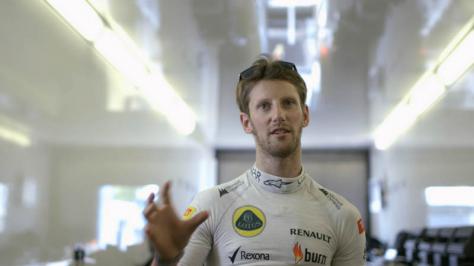b-seen Technology
Human Ignition, Formula 1
Marking the start of the Formula 1 weekend in Barcelona on May 8th last the world premier of 'Human Ignition, Envisioning the Future of Formula 1' was held at the Capilla gallery a satellite of the MACBA. The film is a collaboration between Lotus F1® Team and energy drink Burn. The presentation also featured art works and a cutting edge virtual reality interactive retina display installation which was available to the public to ‘test drive’.
The celebration of the Barcelona Formula 1 Grand Prix brings a lot of excitement to the city each year with multiple parallel events taking place, everything from themed menus (Menú de Leyenda by Paco Pérez at The Mirror Barcelona) to extravagant parties taking place across the city’s nightclubs. The sports’ hybrid nature of man/machine has been capturing the human imagination since 1894 the year of the world’s first motor race (later codified by the Fédération Internationale de l'Automobile into Formula One in 1946). Reaching speeds of up to 350 km/h the sport explores the very limits of human endurance and technology and is a multi-billion Euro phenomenon that moves major investment across the globe.
-

Behind the scenes action from the film Human Ignition, Lotus F1 pit stop
-

The next generation of F1 drivers from the film Human Ignition
At the beginning of the 1960s at the height of the Cold War J.F.K promised America that the United States would be the first nation to place a man on the moon before the end of the decade. The subsequent investment in technology resulted in the discovery of some of the everyday items that we take for granted, Teflon, GPS, LEDs etc. Formula One is like putting a man on the moon every year in terms of the sheer technological achievement. A new documentary feature Human Ignition directed by Bryan Gregg (Deadliest Catch) explores how the sport might evolve by 2030. Working with a team including Hollywood designer Harold Belker, Formula One driver Romain Grosjean and creative studio Marshmallow Laser Feast that works in the intersection of art and technology, the film explores possible advances that include interactive racing track surfaces, alloys that change shape and visualisation tools that allow both drivers and spectators experience the wind and gravitational forces that surround the race cars.
-

Romain Grosjean, Human Ignition
Produced in collaboration with the energy drink Burn and Lotus F1 the film looks at Formula One through the eyes of both veteran figures, future racing stars and enthusiasts from the world of design and creation. Whatever the reality turns out to be in 2030 one thing is for sure Formula 1 will have contributed to the changes we can expect over the next 16 years ahead.
